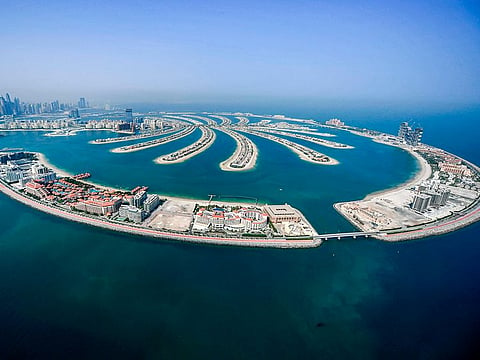Dubai property demand is not done with growth in this market cycle
Current investors too need more time to get desired returns, especially in emerging areas

In the second-half of 2022, the property market in Dubai is still moving along as briskly as it has been since late 2020, with no sign of slowing down. If anything, the city’s real estate sector is making a bigger splash than before as super-prime properties in the Dh300 million range could become the norm for the higher end of the market.
Is this level of growth sustainable? That is the somewhat prickly question that every real estate professional has to answer now. There could be another bubble on the horizon – though to be fair, the doomsayers bring out a new bubble every year that is just poised to burst.
In my view, property prices are not going to fall any time soon, and the reason is simple – demand is vastly outpacing supply and will continue to do so for the remainder of the year. That might at first seem counterintuitive; after all, if one can sell and achieve the asking price (or even higher, as in some cases), then more sellers should be coming into the market with the aim of making a profit.
That certainly is true to an extent, but we need to examine actual market trends to get as better sense of what’s happening. The Shoreline Apartments on Palm Jumeirah, which tend to be hugely popular amongst investors on the Palm, serve as a good case study for the apartment market on the whole. The realization period for an apartment in Shoreline is on average 7-8 years, which is roughly in line with how long a typical expat spends in Dubai.
A 9-year rerun
From a real estate perspective, this means we can expect to see that a period of high activity in a specific community will be repeated roughly 8 years later. For Shoreline specifically, that period of high activity was seen between 2011-13, with 739 transactions. From 2014-16, the number of transactions dropped to 411 – a nearly 80 per cent decrease.
After that, the market cooled off, taking a noticeable dip in mid-2020 before picking back up again. We have once again seen a flurry of activity throughout 2021 and the first-half of 2022, which is about 9 years after the previous spike. In essence, those who bought Shoreline apartments in 2013 were putting them back on the market in 2021, as one would expect. The graph would perhaps have skewed even higher if not for the temporary slowdown caused by Covid.
So where does that leave us now? We are now 9 years after the drop-off phase, when there were fewer transactions occurring in Shoreline. Consequently, we can expect fewer apartments to be on the market at this time.
There will, of course, be outliers – homeowners who have to move out due to exceptional circumstances, the ones who might want to upgrade (or even downgrade) their living situation, and investors who will see the value in selling their property at this time and turning a profit. But that won’t be enough to satiate the phenomenal levels of demand we are witnessing.
In short supply
That same idea can be extrapolated across pretty much every prime sector of the market, whether it’s Downtown or the Marina. In newer communities such as Dubai Hills Estate and the apartment projects in Al Barari, the chances of anything coming to market are practically zero as they still have a long way to go before the expected selloff period.
For the villa market, the realization period tends to be a bit longer. This is a segment of the market primarily made up of owner-occupiers, especially at the top end. A villa purchase in Dubai is largely for the purpose of a primary residence or a vacation home that can be used at various times throughout the year. It’s an asset that most would not part with easily, and there is rarely if ever a high level of supply for prime properties.
There was a brief spike in transactions at the height of Covid when homeowners in prime communities hoped to stay ahead of uncertainty in the market and cut their losses. As buyer confidence returned gradually, it had the ironic side effect of causing sellers to pull back – now that prices are on the rise again, it makes more sense to hold on to one’s property and let it build value over time.
More of the same growth
There has been a growing supply of villas within communities like Dubai Hills Estate, Arabian Ranches 2 and Jumeirah Golf Estates. That supply has dwindled as villas were bought up by new homeowners and by investors putting them up for rent – there is a huge influx of tenants moving into villa communities, particularly in the wake of the pandemic.
Overall, the general market – below Dh10 million – might see a slowdown in growth due to upcoming supply from new projects that are coming close to handover. But prices will continue to creep upwards.
As far as the luxury market goes, new supply mainly consists of one-of-a-kind custom-built homes operating in their own unique price bracket. There isn’t a high enough volume to meet the demand for luxury homes and due to the individual nature of these properties, I can confidently say that the outlook remains bright.
Sign up for the Daily Briefing
Get the latest news and updates straight to your inbox




